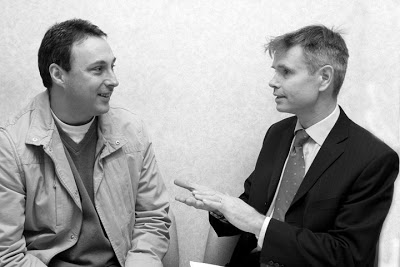Selling for doctors: How doctors can help healthcare clinics sell treatments
The number one job of the doctors in the consultation is to perform the necessary clinical examinations to diagnose and recommend a treatment.
The number two job involves helping the patient believe in the doctor, the clinic or the company the doctor works for. Doing so, involves selling. The trouble is, even mentioning the word ‘selling’ to most doctors will cause them to recoil in abject horror.
If you feel that you’re not getting enough patients at the consultation to convert, then getting your doctors on side is critical to your success.
First, everyone in the healthcare clinic, including the doctors, needs to realise that there are 4 conditions (or 4 whys) that must be answered before any patient elects to pursue a treatment:
- Why fix the problem?
- Why fix the problem with this solution?
- Why choose you to to fix the solution?
- Why fix it now?
The patient has usually answered the first condition before they have arrived at the consultation. It is the job of the consultation, therefore, to answer the remaining 3 conditions.
In our consultation skills and teamwork course, we teach doctors optometrists, surgeons, dentists, chiropractors, and treatment specialists to answer the 2nd and the 3rd why. We teach patient advisors and coordinators to answer the “why now” question.
Customers can generally expect that patient advisors and coordinators will attempt to schedule a treatment date and time, and assist them in arranging financing and other logistical details to close the sale.
However, customers do not expect to hear, and in fact may be put off by, a doctor pressing them into a treatment date and time, (i.e. “closing the deal”). Besides, most doctors would revolt at the mere suggestion of persuading clients to commit sooner than later (even when they own the clinic). So, we teach doctors how to do these things with elegance.
Firstly, the best way to answer the second question (why this treatment?) is for the doctors to greet the patient so that they feel welcome and comfortable
- establish trust and rapport in a short warm-up
- understand and confirm exactly what the patient is trying to achieve
- Listen actively to their concerns
Secondly, the best way to answer the third question (why you?) is for the doctor to
- deliver a strong credibility statement
- answer every clinical question that the patient may have
Thirdly, practitioners can go a long way in helping patient advisors in selling by closing off objections. They can
- gauge the patient’s commitment before the end of the consultation
- clearly lay out alternatives and their pros and cons
- make a clear recommendation
- be very clear about the treatment plan, leaving nothing to guesswork
The number one reason doctors hold back from performing these selling tasks is a lack of knowledge. The second barrier is psychological, such as long-held prejudices (i.e. “I’m not a sales person”) borne from fear that is usually communicated in excuses. Excuses are many and persistent, but they sound a lot like:
- “selling is not my job”
- “I’m too busy to do that”
- “I don’t want to appear pushy”
- “I prefer to let people make up their own mind”
- “The patients won’t like it”
- “That’s too salesy for us”
- “It’s not professional”
In our courses, we break down all of these excuses and get at the underlying issue. What it comes down to, usually, is the fact that we have an overwhelming number of negative connotations about “selling” in our culture. Very few doctors would be pleased with their young adult children coming home from school happily announcing that they are deciding to pursue professional sales as a career. It’s a self-concept issue: selling is routinely associated with words like ‘pressure’, ‘lying’, ‘harassment’, ‘unprofessionalism’ and worse.
What we do in our courses, is demonstrate the necessity of selling in a private medical environment. We find, that after 1 day of sales training, most doctors feel considerably more comfortable with selling in the private medical environment. And, understand the necessity of doing it well.
